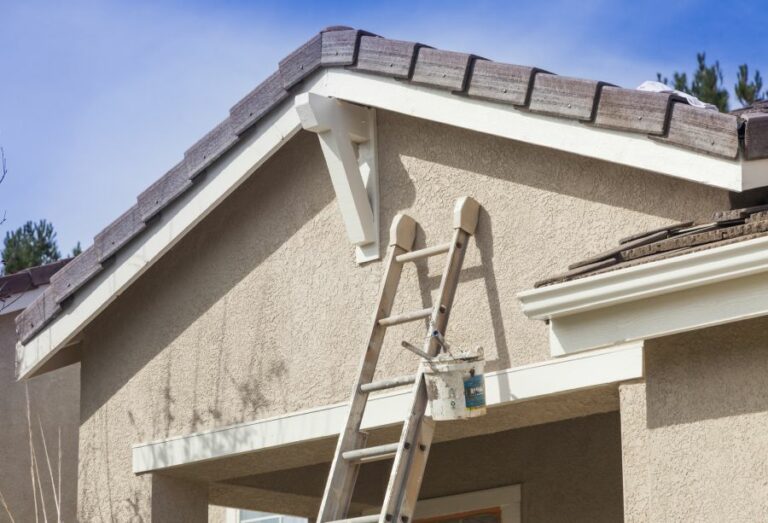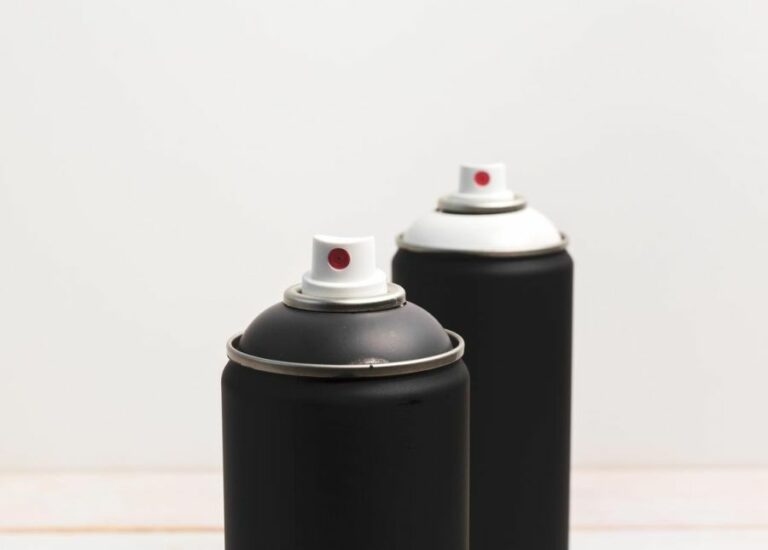Revamp Outdoor Spaces Through Paint Art. What Pros Say
Are you looking to revitalize your outdoor spaces and bring life to those blank walls? Look no further! Our paint art expertise can help you transform those dull surroundings into vibrant, exciting areas where family and friends can gather and enjoy. We have the perfect solution for infusing color, creativity, and passion into your outdoor living areas, whether patio, a garden, or even a balcony.
Revamp outdoor spaces through paint art:
Revamping outdoor spaces through paint art involves selecting appropriate weather-resistant paint, creating murals, repurposing furniture with creative designs, painting decorative planters, and creating painted rocks and garden ornaments. These affordable techniques transform outdoor areas into vibrant, attractive spaces, enhancing the overall appeal of your home.

Breathe new life into your outdoor spaces with creative paint art techniques! Explore tips, ideas, and inspiring projects that will transform the look and feel of your gardens, patios, and balconies. Read on to awaken the artist within and create an inviting oasis to cherish.
Contents
- 1 Upgrade Exterior Areas with Paint Artistry
- 2 Ways to Redesign an Outdoor Space
- 3 Is it Possible to Paint Slate Patio Slabs?
- 4 Utilizing Outdoor Spaces Effectively
Upgrade Exterior Areas with Paint Artistry
A well-decorated and vibrant outdoor space can dramatically improve the overall look and feel of your home.
One of the most effective and affordable ways to elevate your outdoor area is through the use of paint art. Whether you have a small patio or a large garden, paint art can transform your space into an attractive and eye-catching zone.
• Choosing the Right Paint for Your Outdoor Project
The first step to revamping your outdoor space with paint art is selecting the right type of paint. You can’t use just any paint; it must be specifically formulated for outdoor use.
These paints are specifically designed to withstand various weather conditions and resist fading, chipping, and peeling. Some popular options include acrylic, latex, and oil-based paints for exterior projects.
I would recommend using high-quality outdoor paint, as it will provide long-lasting results and ensure your paint art looks beautiful for years to come.
When selecting a paint color, consider the overall design and color scheme of your outdoor space. Choose colors that will complement the existing elements and enhance the visual appeal.
• Mural Painting: Turn Your Walls into Art
Mural painting is an excellent way to revitalize a dull or drab wall in your outdoor space. A mural can be as simple or as intricate as you like, but the key is to plan your design carefully before you begin painting.
Start by sketching your design on the wall using a pencil so you have a reference point for your artwork. This will also allow you to make any necessary adjustments before you start painting. You can find free mural design templates online or create your own to suit your specific tastes.
Once you’re satisfied with your design, you can begin painting. Use small brushes for detailed work and larger brushes for broader strokes. Take your time and work in sections, allowing each portion of the mural to dry before moving on to the next area.
• Colorful Outdoor Furniture
Repurposing and revitalizing old or worn-out furniture is an excellent way to add a touch of paint art to your outdoor space. Rather than discarding these pieces, transform them with a fresh coat of paint and some creative designs.
Chairs, tables, benches, and other outdoor furniture can all benefit from this transformation. Choose colors that will complement your existing outdoor space, and consider adding unique patterns, such as stripes, chevron, or even hand-painted flowers for an extra touch of flair.
• Decorative Planters and Containers
A simple way to introduce paint art to your outdoor space is by painting decorative planters and containers. This approach not only adds visual appeal but it also helps to establish a cohesive color scheme throughout the space.
You can find a wide variety of planters and containers in local garden centers or home improvement stores. Opt for simple, inexpensive clay or terracotta pots that will serve as a blank canvas for your paint art creations.
Once you’ve selected your planters, choose a paint color and design that will complement your existing outdoor decor. Consider painting geometric designs, abstract patterns, or even scenes from nature for a more artistic touch.
• Painted Rocks and Garden Ornaments
Another easy and inexpensive way to incorporate paint art into your outdoor space is by creating custom-painted rocks and garden ornaments.
This project is an excellent opportunity to involve the whole family, as kids and adults alike can enjoy painting unique designs onto rocks, stones, or other garden items.
To get started, gather rocks or stones of varying sizes and clean them thoroughly before painting. Acrylic paint is a suitable choice for this project, as it is durable and will withstand outdoor conditions.
Paint your rocks and garden ornaments using various colors and designs, and once complete, display them throughout your outdoor space to add personality and charm.
• Final Thoughts
In conclusion, revamping your outdoor space through paint art is a creative and affordable way to breathe new life into an otherwise uninspiring area of your home. With numerous paint art techniques and projects to choose from, you have the opportunity to create a space that is uniquely yours.
Remember, the key to a successful outdoor paint art project is selecting the right type of paint, planning your designs carefully, and being patient and diligent throughout the process. With a bit of effort and creativity, you can transform your outdoor space into a stunning and inviting retreat.
Ways to Redesign an Outdoor Space
Transforming your outdoor area can be a daunting task, but with proper planning and execution, you can create a beautiful, functional space to enjoy with family and friends.
• Assess Your Needs
The first step in transforming your outdoor area is to assess your needs and determine the primary function of the space. This may include:
- Entertainment for gatherings and parties
- Relaxation and lounging
- Gardening and plant cultivation
- Play areas for children and pets
- Outdoor cooking and dining
When assessing your needs, consider both the current and future requirements of your outdoor space. Also, take into consideration how your needs might evolve over time or as your family dynamics change.
• Develop a Concept and Plan Your Design
Once you have a clear understanding of your needs, you can begin developing a concept for your outdoor area. This might involve creating a mood board or sketching some initial ideas to help visualize your desired outcome. When planning your design, consider the following:
- Layout and flow: This will greatly depend on the size and shape of your outdoor space. Consider the placement of seating, dining areas, and garden beds to ensure the space flows well and is visually appealing.
- Integrating with existing structures: Take into account any existing buildings or structures and plan to integrate them into your design seamlessly. This could mean coordinating the color of your new patio with the exterior of your home or incorporating an existing pool into your new entertainment area.
- Plant selection: Choosing the right plants for your outdoor space is critical. Consider the climate, soil type, and sunlight exposure in your specific location when selecting plants.
• Estimate Budget and Timeline
After you have a clear vision of your desired outdoor area, it’s essential to develop a realistic budget and timeline for the project. This will help ensure that the transformation process runs smoothly and remains within your financial means. To create an accurate budget, consider the following factors:
- Material costs (e.g., pavers, decking, plants)
- Labor costs (e.g., landscaping services, contractors)
- Furniture and decor costs
- Maintenance costs (e.g., irrigation systems, lighting)
- Permit and inspection fees (if required)
Once you have established your budget, it’s crucial to develop a reasonable timeline for the project. This might involve working with landscapers, contractors, and other service providers to establish the time frame for each phase of the work.
• Choose Materials Wisely
Selecting appropriate materials for your outdoor area is an essential step in ensuring the durability and aesthetic appeal of the space. Here are some tried and tested recommendations:
- For decking and patio surfaces, consider materials such as natural stone, concrete pavers, composite decking, and brick. Each material has its own benefits and drawbacks, so carefully weigh the pros and cons to determine the best option for your needs.
- For garden beds and planters, choose materials like wood, metal, or stone that are suitable for outdoor use and can withstand the elements. It’s also essential to use high-quality soil and compost to establish a healthy environment for your plants.
- For furniture and decor, opt for durable materials like wrought iron, teak, or aluminum that can withstand the outdoor elements and will maintain their appearance over time.
• Implement Your Vision and Monitor Your Progress
Now that you have a clear plan, budget, and timeline in place, you can begin the transformation process. This might involve hiring landscaping services, contractors, or other professionals to help implement your design.
Throughout the project, monitor progress and maintain open lines of communication with your service providers to ensure the work is being completed according to your specifications and timeline.
• Maintain and Enjoy Your New Outdoor Space
Once your outdoor area has been transformed, it’s essential to prioritize ongoing maintenance to ensure your investment remains in excellent condition. Develop a regular maintenance schedule that includes tasks such as:
- Watering plants and lawns
- Pruning plants and trees
- Cleaning outdoor surfaces and furniture
- Inspecting and repairing structures and features
Now that you’ve put in the hard work, it’s time to enjoy your new outdoor space with family and friends!
Whether you’re hosting a backyard barbeque, lounging on a patio chair with a good book, or tending to your thriving garden, your outdoor area has become an extension of your home, providing countless opportunities for enjoyment and relaxation.
By following the steps outlined in this article, you can successfully transform your outdoor area into the inviting, functional space you’ve always envisioned. Happy landscaping!
Step | Description |
|---|---|
1 | Evaluate the area: Determine how the outdoor area will be used, and take note of the surroundings, size, and any plants or structures that need to be addressed. |
2 | Create a design plan: Sketch a layout, decide on a theme or style, and choose features such as lighting, furniture, and plant types. |
3 | Prepare the area: Clear any debris, pull weeds, prune or remove plants as needed, and address any structural issues. |
4 | Add hardscape elements: Install patios, walkways, retaining walls, or other structural features as necessary to create a foundation for your design. |
5 | Integrate plantings: Create flowerbeds, borders, and focal points with a variety of plants suited for your climate and design scheme. |
6 | Install outdoor lighting: Illuminate pathways, highlight plants or structures with low-voltage lighting, or add string or lantern lights to create ambiance. |
7 | Add furniture and decor: Place outdoor seating, tables, and other furniture that supports the intended use of the space, and incorporate decorative elements such as outdoor art, sculptures, or water features. |
8 | Maintain the space: Regularly clean and maintain the area, including tasks like weeding, pruning, washing the furniture, and checking lighting functions. |
Is it Possible to Paint Slate Patio Slabs?
Slate patio slabs, popular for their natural appearance and durability, sometimes need a little makeover. Homeowners often wonder if painting these slabs is an option. The answer is yes! You can absolutely paint slate patio slabs, giving them a fresh look and vibrant appearance.
• The Benefits of Painting Slate Patio Slabs
There are several reasons why one might opt to paint slate patio slabs:
- Reviving aesthetics: Over time, slate can lose its sheen due to weathering or dirt. The painting will bring back the slab’s vivid color and overall appeal.
- Protection: A coat of paint can protect the slate from extreme weather conditions, greatly improving its durability.
- Customization: Painting allows you to personalize your patio, choosing colors that match your home’s exterior and overall landscape design.
• Preparing the Slate for Painting
To ensure the success of your painting project, the slate surface must be prepared accordingly.
– Cleaning the Slate Surface
Before painting, ensure the slate surface is clean and dry. Sweep away any debris or dirt from the surface, and then use a pressure washer, or a water hose nozzle with a strong jet setting, to wash the slates.
You can also use a mild detergent mixed with water to remove stubborn stains. After cleaning, allow the slate to dry completely for 24 hours.
– Repairing Cracks and Chips
Inspect the slates for any cracks, chips, or loose pieces. Fill any gaps with a suitable cementitious crack filler, and allow it to dry according to the manufacturer’s instructions. Likewise, if there are any loose slates, secure them into place using an appropriate adhesive.
• Choosing the Right Paint and Primer
Selecting the right paint and primer for your slate patio slabs is essential in ensuring the longevity and durability of your paint job. Here are some key factors to consider during the selection process:
– Primer
To begin, apply a primer that is specifically designed for exterior masonry or concrete surfaces. This will not only create a suitable surface for the paint to adhere to but also prolong the life of the paint job.
It is recommended that you use a latex-based masonry primer for slate patio slabs. Follow the primer application guidelines provided by the manufacturer.
– Paint
Choose high-quality, exterior-grade masonry or concrete paint to ensure the durability and longevity of your paint job. These paints are designed to resist water, UV rays, and environmental contaminants, thus providing excellent protection for your slate slabs.
Latex-based acrylic paint is recommended, as it works well on slate and withstands outdoor conditions.
• Painting Your Slate Patio Slabs
With proper preparation in place, it’s time to apply your chosen paint to the slate patio slabs.
– Applying the Primer
Using a paint roller or brush, apply the primer evenly over the slate surface, ensuring complete coverage. Note that using a medium-nap roller will help get the primer into the natural grooves of the slate.
Be sure to wait for the primer to dry completely, as per the manufacturer’s instructions, before moving on to the paint application.
– Painting the Slate
Once the primer is dry, apply your chosen paint using a paint roller or brush. Start at one corner of the patio and work your way across, applying paint in even, smooth strokes. Apply at least two coats, allowing the paint to dry completely between each coat, as recommended by the paint manufacturer.
– Adding a Protective Sealant (Optional)
After the paint has dried, you might consider adding a layer of protective sealant for additional protection against weathering and wear. Be sure to choose a sealant compatible with your chosen paint and follow the manufacturer’s application guidelines.
• Maintenance and Care
To keep your newly-painted slate patio slabs looking fresh and vibrant, it’s essential to conduct regular maintenance. Sweep the surface frequently to remove debris that may cause scratches or discoloration, and clean the slates with mild soap and water when they appear dirty.
If you detect any signs of wear or chipping, touch up the paint as needed.
In conclusion, painting slate patio slabs is a practical and effective way of reviving the appearance of your outdoor space. By following the guidance provided in this article, you can ensure a successful paint job that will give your patio a fresh and inviting look for years to come.
Utilizing Outdoor Spaces Effectively
Having an outdoor space can greatly increase the enjoyment and value of your property, providing you with opportunities for relaxation, entertainment, and more.
• Create Different Zones for Different Activities
One effective way to make the most of your outdoor space is to divide it into different zones for various activities. This approach helps to make your space more organized and functional. Here are some zones you could consider incorporating in your outdoor area.
– Relaxation Zone
Create a comfortable and peaceful relaxation zone where you can enjoy the fresh air, read a book, or take a nap. This zone may include comfortable seating, such as lounge chairs or hammocks, and some shade structures to protect you from the sun.
– Dining/Entertainment Zone
If you love hosting gatherings or having outdoor meals, set up a dining and entertainment zone. This area could feature a table and chairs for alfresco dining, an outdoor grill or kitchen for cooking, and possibly a fire pit for cozy evenings.
– Play Zone
For families with children, creating an outdoor play zone will provide hours of fun and entertainment. Incorporating a swing set, a sandbox, or other outdoor play equipment can transform your space into an exciting playground.
– Garden Zone
A dedicated garden zone will allow you to enjoy the beauty and benefits of growing your own fruits, vegetables, or flowers. Invest in raised garden beds, hanging pots, or trellises to optimize the space.
• Choose Multipurpose Furniture and Decor
Selecting versatile furniture and decor elements is an excellent way to make your outdoor area more functional and efficient. Consider the following suggestions:
- Opt for foldable or stackable chairs and tables that can be easily stored when not in use, freeing up space for other activities.
- Use benches or stools that double as storage containers for garden tools, toys, or blankets.
- Incorporate planters that also function as privacy screens, dividing your space while adding a touch of greenery.
• Enhance the Ambiance with Lighting
Proper outdoor lighting can make your space more usable and inviting, especially during the evening hours. Here are some lighting options to consider:
- Use solar-powered lights for an eco-friendly and cost-effective solution. This can include path lights, stake lights, or even string lights for a festive touch.
- Install permanent lighting fixtures for a more polished look. This may involve wall-mounted sconces, recessed ground lights, or spotlights to highlight architectural or landscape features.
• Utilize Vertical Space
Incorporating vertical elements into your outdoor area can significantly increase your usable space and create visual interest. Here are a few ideas to consider:
- Install a vertical garden or living wall, allowing you to grow plants, herbs, or small vegetables without taking up valuable floor space.
- Attach hanging planters, shelves, or pegboards to a wall or fence to display potted plants or decorative items.
- Set up a trellis, pergola, or arbor to provide additional structure and support for climbing plants or vines while also creating a shaded area underneath.
• Final Thoughts
Making the most of your outdoor space can greatly enhance your home’s appeal, value, and livability. By creating different zones, choosing multipurpose furniture, enhancing the ambiance with lighting, and utilizing vertical space, you can transform your outdoor area into a functional and enticing haven.







